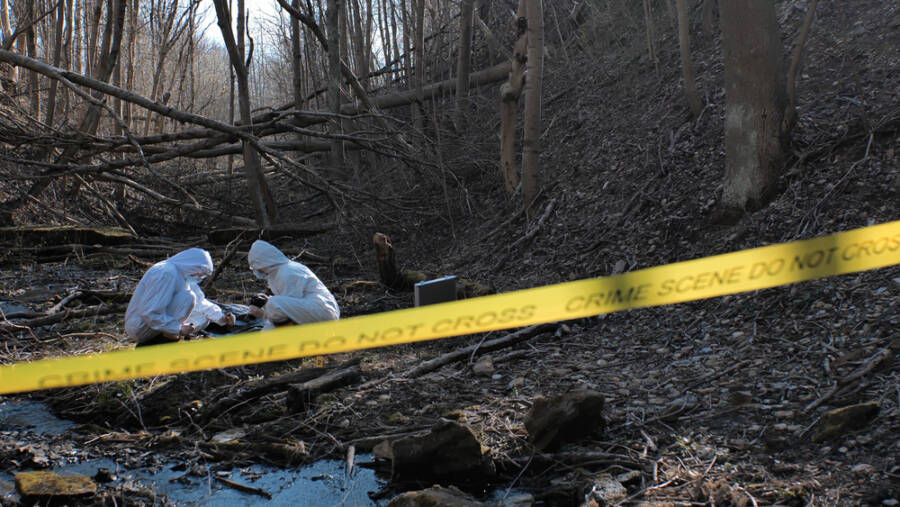How many of these historical sites are on your bucket list?
Reading about history in books is one thing. But to experience it for yourself is an entirely different story.
Now, unfortunately, or maybe fortunately in some cases, time travel hasn’t yet been invented, so you can’t go back to the times when important things happened in the history of the United States of America.
However, there is still a way you can relive them today: by visiting the historical sites where these monumental events ACTUALLY occurred.
While our country is pretty young compared to some other parts of the globe, like Europe, there’s plenty of history we have packed into our couple of hundred years as a country.
And some of the remains of those historical times are still around today and are truly worth a visit. So you might want to consider these top 8 American historical sites when looking for a unique trip.

Ellis Island, New York City, NY
If you’re planning your next visit to the Big Apple, you’ll also want to do some sightseeing, so hop on over to Ellis Island. This historical site is a big part of American history because it was the first piece of US land on which many immigrants stepped foot.
Nicknamed the Gateway to America, this place saw over 12 million immigrants enter through whose descendants now represent nearly half of the citizens of the United States of America.
There’s a gallery on the island which rotates exhibits relating to the immigrants and their stories of coming to our country. Before visiting, though, you should know that Ellis Island is open for visitors every day of the year except Thanksgiving and Christmas.
And even though the entrance is free of charge, the ferry requires purchasing a ticket.
French Quarter, New Orleans, LA
Not many other neighborhoods in the US provide as much eye candy as the cobblestoned streets of New Orleans’ French Quarter, known as “the Quarters” to residents, and we’re not talking about the annual Mardi Gras parades.
It’s the historical site’s architecture that’s intriguing. Stroll this district, framed by the Mississippi River, Rampart Street, Canal, and Esplanade, and you’ll see nightclubs all lit up in neon.
But you’ll also glimpse into the past through the French colonial townhouses that are draped in ivy. You’ll also see Creole cottages that are built on stilts, and we can’t forget the antebellum mansions with their beautiful balconies that are laced with elaborate ironwork.
Colonial Williamsburg, Williamsburg, VA
This historical site is an actual living history museum and is one-of-a-kind. It’s the world’s largest living history museum and home to over 40 different sites, among many other things.
Adults AND children alike will love visiting Colonial Williamsburg for a proper step back to the 18th century. The people who work in the trade shops aren’t just actors either.
They’re skilled makers and apprentices in their field who use tools and methods from the 18th century. And while you’re here, you can try your hand at some of the work yourself.
This is truly the perfect location to fully engage with our country’s history in a colonial town and maybe even try your hand at shooting a flint musket.
Be sure to stop by one of the four taverns here to get a taste of what “grabbing a drink” was like back then. There are also two world-class art museums that you won’t want to miss out on.

Independence Hall, Philadelphia, PA
Independence Hall is a must-visit for all travelers because the hall is the site of two defining points in the creation of the United States.
This historical site has been around since 1753 as the Pennsylvania State House to act as the Province and Commonwealth of Pennsylvania’s capital.
The State House played an integral role in the formation of the US. In 1775, the Second Continental Congress was formed in the house to push the 13 British American colonies toward war.
George Washington was chosen as the commander-in-chief of the Continental Army, while Benjamin Franklin was selected as Postmaster General.
The State House finally became Independence Hall on July 4th, 1776, which is when the Declaration of Independence was ratified in the facility.
After the American Revolutionary War ended, the Constitutional Convention took place in this very hall. The result of it being the Constitution of the United States of America.
The Alamo, San Antonio, TX
This historical site is a mission and fortress in what is now San Antonio, Texas, that played a significant role in the state’s history.
The historical site was initially built sometime in the 1700s as a home to the Spanish missionaries but would later become a fort for Spanish soldiers. This is where the Battle of the Alamo was fought in 1836.
This battle saw the Republic of Texas and Mexico go head-to-head, leaving the Texans in the dust and killing every soldier in sight. The Alamo was used by Confederate armies during the Civil War and then as a warehouse in the 1870s.
Today it stands as a mark of a vibrant history that shaped Texas and the United States and one that over 2.5 million people visit annually.
Yellowstone National Park, Wyoming, Idaho, Montana
You might be wondering why we would put a national park on our list of historical sites. Well, fun fact: Yellowstone National Park is the very first national park to ever exist in the US AND the entire world. Did you know this?
Yellowstone laid the foundation and set the bar high for any future national parks all around the world. Thanks to that, we have 61 national parks that give travelers from across the globe the experiences of a lifetime today!
But beyond that, Yellowstone feels like a step back in time, to a place where the buffalo roam and the deer and the antelope play. Oh, and let’s not forget about the exploding geysers and other hydrothermal features that are on display, around 10,000 to give you a rough idea.
Manzanar National Historic Site, Independence, CA
The Manzanar War Relocation Center was 1 out of 10 camps where Japanese Americans were kept against their will during World War II. After Japan attacked Pearl Harbor, much of the American public worried that the Japanese Americans were secretly backing Japan.
In 1942, on February 19th, Franklin D. Roosevelt, while president, signed an Executive Order: number 9066, allowing the Secretary of War to vacate any “undesirable” people from “military areas” and built relocation centers.
More than 120,000 Japanese Americans were taken out of their homes during that period. Shockingly, two-thirds of the Japanese Americans were native-born Americans.
The Manzanar War Relocation Center is a must-visit historical site, representing one of the United States’ darkest moments during World War II.

Trail of Tears National Historic Trail, New Echota, GA
The Trail of Tears is not just one particular historical site. It’s actually a series of different routes beginning from the southeastern part of the US to the lands west of the Mississippi River. Mostly the future state of Oklahoma.
In the 1830s, members of the Cherokee, Creek, Seminole, Chickasaw, Choctaw, Ponca, and Winnebago nations were removed by force from their homes and pushed to march westward. As the young American Nation looked to grow, the settlers wanted more and more land.
The American Indian tribes in the Deep South were in the way of this expansion. This forced the United States government to pass the Indian Removal Act. Many of the tribes resisted, but they were forced out of their homelands. Over 13,000 people died during this march.
Hopefully, some of our favorite historical sites in America have inspired you to pack your bags (don’t forget your camera) and head out to visit what our beautiful country has to offer.
But if you’re stuck indoors and don’t have the chance to visit our country’s historical sites, we’ve got many more great reads for you to help you pass the time. We’re especially proud of this one: 8 Magnificent Oldest Castles in the World





